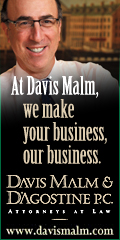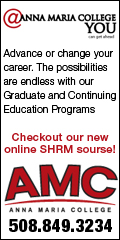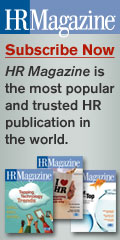
| December 2011 | Past Issues | Advertise |
Hire Right The First Time: Cracking The Personality Code in the HR Industry
There are several steps to creating an effective recruitment program. The first starts with the basics - the job description. Many companies don't even have job descriptions for their positions and that's one of many hiring pitfalls. It’s very difficult to describe a position to a candidate, without having it completely defined. The next problem with job descriptions is that they are usually not definitive enough. It's important to detail the expected job performance outcome, and be very specific in what is needed and expected. The job description should have 30-, 60-, 90- and 180-day objectives, so the candidate has a clear understanding what is expected for the job. Be sure to review and update job descriptions regularly, as company needs and expectations for a position are bound to change. The next step is to define where to recruit candidates or target your recruiting process. Now that you have an idea of what you need and expect for the position, where do you find this treasured person? There are many resources: Referrals, recruiters, ads, college placement centers, .com listings, etc. Of course, referrals are usually one of the best sources for candidates and giving out the job description to business associates and friends may reveal the perfect candidate. When working with recruiters, it is very important to be as specific as possible to avoid your time being wasted with unqualified candidates.
According to Arnie Winkler of the Northwest Public Power Association, "Organizations must be specific in understanding what they want in technical competency, cultural fit and behavioral characteristics." The same is true for ads so that the ad is as definitive as possible. College placement centers are not only good for recruiting college grads, but usually have facilities to list positions that require extensive experience too. They can be especially helpful if they are in close contact with the alumni association.
Soon in your hiring process, you will be faced with a big pile of resumes. Look for resumes that are specific to your needs and notice the presentation style, which will tell you a great deal about the candidate. It is helpful to decide what the priorities are for the position and look for those first in the resumes. Once you have settled on a few resumes, we suggest the two step approach to interviewing. The first is the telephone interview, which can save you valuable time and effort. Ask the candidate a set of specific questions, such as: Why are you interested in this position? Please describe three key attributes that you have to offer to our company? Give me one significant program that you had an impact on in the last six months? Listen carefully to the candidate to see if the response fits the job description. This process allows the candidate to earn a face-to-face interview. When interviewing in person, it is important to listen and not let emotions take over. The candidate should talk about 80 percent of the interview and the interviewer only 20 percent. The goal for interviewing effectively is to note their thinking patterns, and not get caught up in appearances, impressive schools or companies. During the interview, questions that are more specific are helpful in making successful hiring decisions. Some examples are: What significant impact have they had at three or more companies on their resumes - ask for specifics, percentage of change; Please describe in detail what brought about the change; What was their process, from A to Z? and ask how the candidate would handle a specific problem that you have seen in the position. Once a candidate has been selected to be hired, then the most difficult part of the hiring process begins - reference checking. Most firms find professional organizations helpful when making background checks. We highly recommend doing a very thorough check including verifying education, job history, criminal (local, state and federal) and credit if it applies. Background and reference checks should be a part of your hiring process. Yet, as the old saying goes, "You never know someone until you work with them, travel with them or live with them". Through in-depth work style and personality assessments, you can reduce the possibility of making a hiring error if the appropriate assessment is selected.
A common inquiry from companies and organizations is about the legal guidelines in providing assessments to candidates. Since industries vary, it is always best to check with a trade association or a legal representative. The general rule is that a test or any set of hiring questions needs to be administered to all final candidates in order to assure that discrimination is not taking place. More information may be found at the EEOC website, in the Disability-Related Inquiries and Medical Examinations of Employees section: Another question is how do new hires usually feel about taking an in-depth, work style assessments. It shows that a company is serious about who they hire. If the company presents the testing program as a method of assuring both parties that they are making the right decision, the individual usually responds very well. The bottom line is that hopefully turnover is greatly reduced. In-depth assessments can be very helpful for personnel development and succession planning. As a hiring tool, they can be used to develop additional questions for interviewing and confirming the interviewer's intuition that might be overlooked. This process gains more reliable and accurate data in order to effectively manage individuals to make hiring and personnel decisions a win-win for everyone. About the Author: Dana Borowka, MA has over 25 years of experience in business consulting. He has an undergraduate degree in Human Behavior and a masters degree in Clinical Psychology. He can be reached via phone at (310) 453-6556, extension 403 or via email at dana@lighthouseconsulting.com.
|
|
303 Wyman Street, Suite 285, Waltham, MA 02451-1253 |
 |



